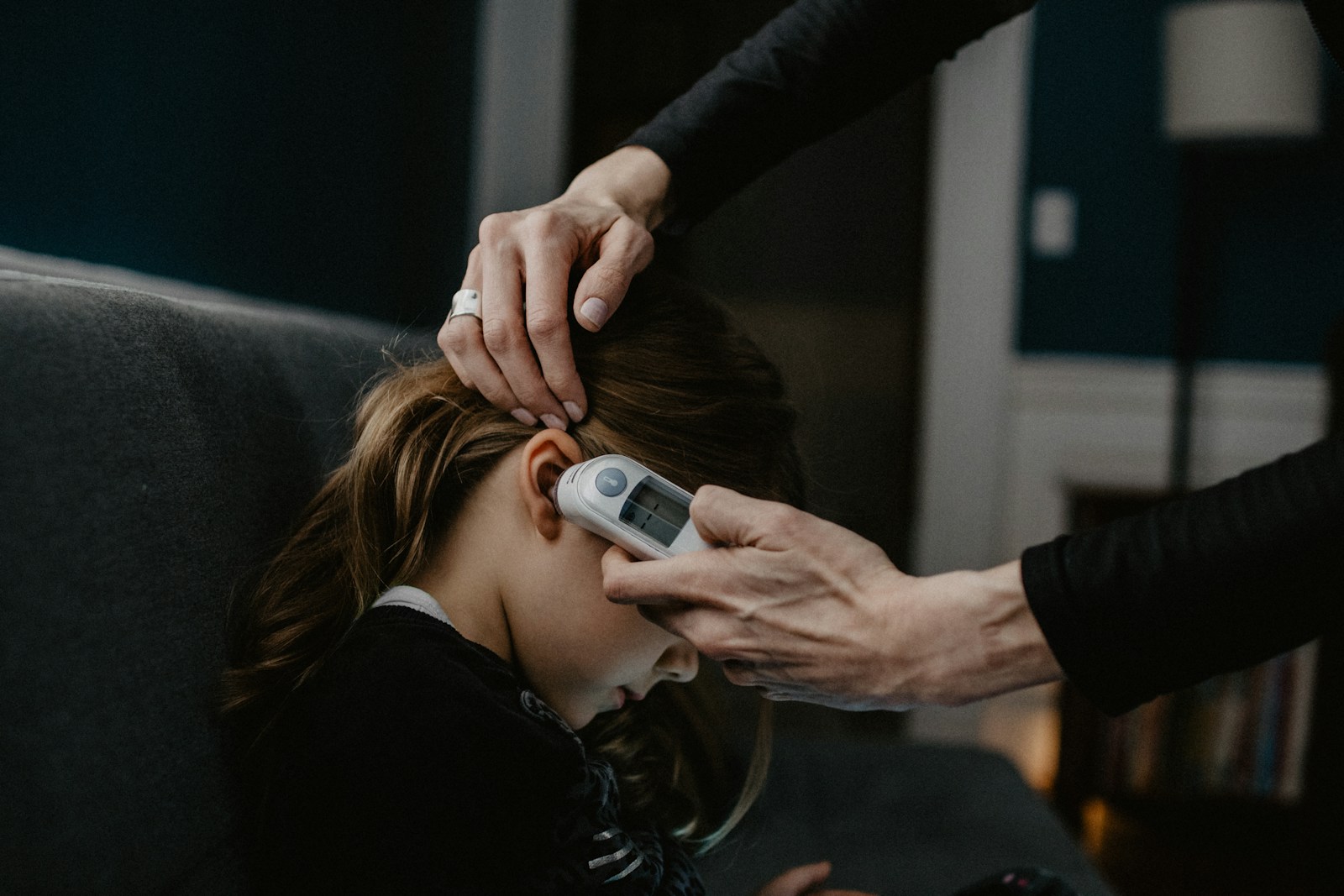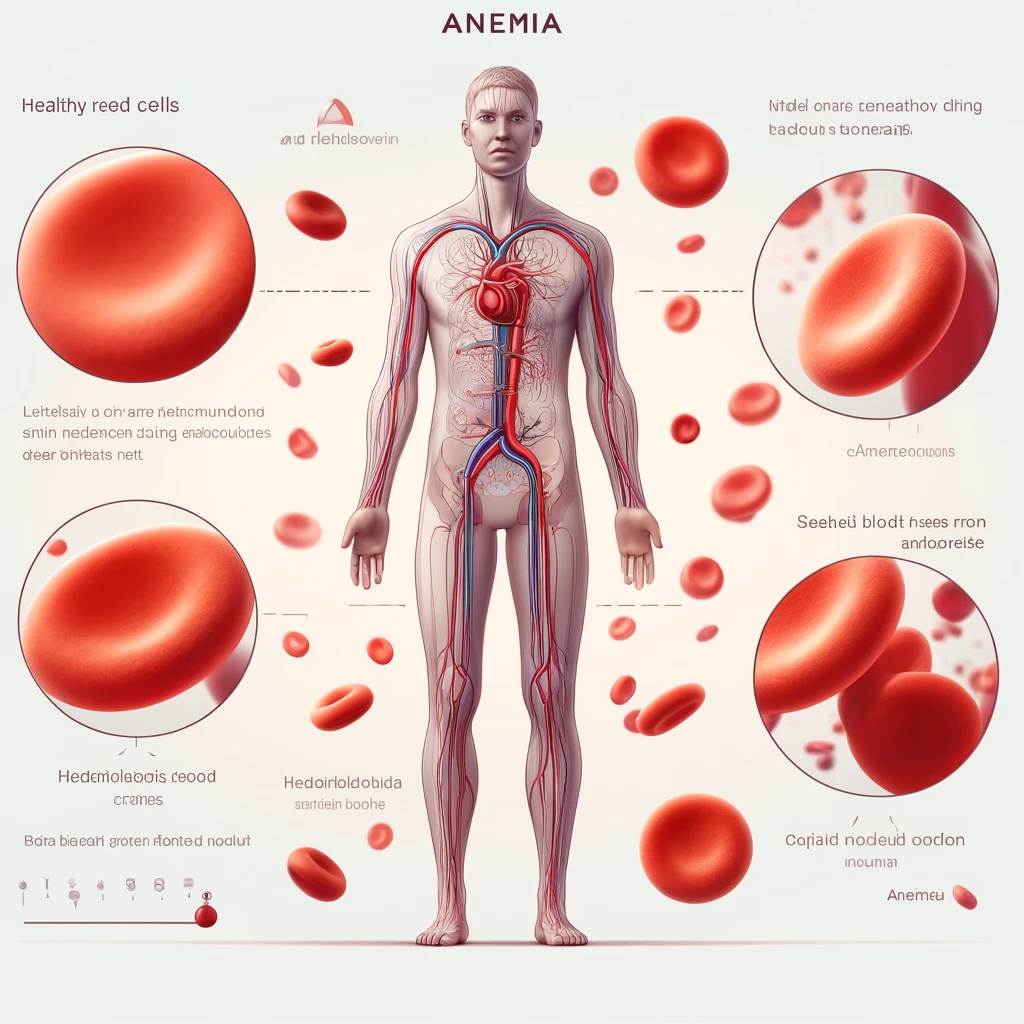A Fever is one of the most common symptoms in several diseases, often being a cause for concern among people. Characterized by elevation of body temperature, fever is a the body's natural response to an infection or inflammation. It acts as a defense mechanism, helping the immune system fight pathogens.
Definition of Fever
Fever is defined as a temporary elevation in body temperature, often due to an illness. It occurs when the body temperature rises above normal, generally considered from 37.5°C. This elevation is controlled by the hypothalamus, a part of the brain that regulates body temperature.

Common Causes of Fever
Fever can be caused by a variety of conditions, including:
- Infections: Bacterial, viral, fungal or parasitic.
- Inflammations: Inflammatory conditions such as rheumatoid arthritis.
- Medicines: Some medications can cause fever as a side effect.
- Vaccines: Some vaccines can cause a temporary fever.
- Chronic diseases: Illnesses such as cancer can be accompanied by fever.
Fever is What Temperature?
Body Temperature Ranges
Normal body temperature varies between 36.1°C and 37.2°C. However, the temperature can vary throughout the day, generally being lower in the morning and higher in the afternoon and evening.
Mild Fever vs. High fever
Fever is categorized based on the severity of the temperature rise:
- Mild Fever: 37.5°C to 38°C.
- Moderate Fever: 38.1°C to 39°C.
- High fever: Above 39°C.

How to Measure Fever Correctly
To accurately measure your fever, use a thermometer and follow these steps:
- Oral: Place the thermometer under your tongue.
- Axillary: Place the thermometer in your armpit.
- Rectal: Insert the thermometer into the rectum, the most accurate method for babies.
- Tympanic: Use an ear thermometer to measure the temperature of your ear canal.
Temperature Specifications
Fever of 37.4°C
A temperature of 37.4°C may not be considered a fever by many healthcare professionals. It can be a normal body variation or an early sign of an impending fever, depending on the context and associated symptoms.
Fever of 37.5°C
From 37.5°C, the temperature is already considered feverish. Although it is a mild fever, it is important to monitor other symptoms and the evolution of temperature, especially in children and the elderly.
Fever of 37.7°C
At 37.7°C, a fever is still considered mild, but may indicate the body's initial response to an infection or other underlying condition. Staying hydrated and resting is crucial at this stage.
Fever of 38°C
A temperature of 38°C indicates a moderate fever. This is usually a sign that the body is fighting an infection. At this stage, it is recommended to closely monitor the fever and consider using antipyretics to alleviate symptoms.
Fever of 39°C
A fever of 39°C is high and can cause significant discomfort. It is important to monitor the affected person for signs of dehydration and other serious symptoms. The use of medications to reduce fever is often necessary, and medical consultation may be recommended.
Fever of 40°C
A fever of 40°C is considered very high and can be dangerous. This temperature requires immediate medical attention, especially in children, the elderly, and individuals with underlying health conditions. It could be a sign of a serious infection or other medical condition that needs to be treated quickly.
Fever of 41°C and Above
Temperatures above 41°C are extremely high and constitute a medical emergency. Hyperthermia of this level can cause organ damage and needs urgent medical intervention. Rehydration, cooling, and treatment of the underlying cause are essential.

Fever in Different Age Groups
Fever in Babies
Fever in babies requires special attention. In newborns, any fever can be a sign of a serious condition and should be evaluated by a doctor immediately. For older babies, mild fevers are common, but it's important to watch for other symptoms.
Fever in Children
Children often have a fever due to viral infections. Although many fevers are not serious, it is important to monitor your temperature and symptoms. High or persistent fevers should be evaluated by a pediatrician.
Fever in Adults
In adults, fever can be a sign of a variety of conditions, from minor infections to more serious illnesses. Moderate to high fever that persists for more than three days or is accompanied by other severe symptoms should be evaluated by a healthcare professional.
Fever in the Elderly
Fever in older people may be less pronounced, but that doesn't mean it's any less serious. With aging, the febrile response can be attenuated, causing serious infections to present mild or even no fevers. Therefore, it is crucial that additional symptoms, such as confusion, weakness, or shortness of breath, are closely monitored and treated by a doctor.
Specific Types of Fever
Yellow Fever: Symptoms and Prevention
Yellow fever is a viral disease transmitted by infected mosquitoes. Its main symptoms include high fever, chills, severe headache, muscle pain, nausea, vomiting and fatigue. In severe cases, it can cause jaundice, bleeding and organ failure. The best form of prevention is vaccination, recommended for people who live in endemic areas or who travel to these regions. Furthermore, mosquito control measures, such as the use of repellents and protective nets, are essential.
Typhoid Fever: Symptoms and Treatment
Typhoid fever is caused by the bacteria Salmonella typhi, transmitted through contaminated food and water. Symptoms include prolonged high fever, abdominal pain, diarrhea or constipation, headache and rash. Typhoid fever treatment involves the use of specific antibiotics, and it is crucial to follow all prescribed doses to avoid relapses and complications. Prevention includes proper hygiene practices, consumption of treated water and vaccination for travelers to endemic areas.

How to Reduce Fever?
Home Methods to Reduce Fever
There are several ways to reduce fever at home, which include:
- Hydration: Drink plenty of water, juices and broths to avoid dehydration.
- Rest: The body needs energy to fight infection, so rest is essential.
- Cold Compresses: Applying cold compresses to the forehead, wrists and calves helps reduce the temperature.
- Warm Bath: A warm bath can help reduce a fever, but avoid very cold water to avoid chills.
Fever Medications
Antipyretic medications are used to reduce fever. The most common include:
- Paracetamol (Acetaminophen): Effective for reducing fever and relieving mild to moderate pain.
- Ibuprofen: Reduces fever, relieves pain and has anti-inflammatory properties.
- Aspirin: It is not recommended for children due to the risk of Reye's Syndrome.
When to See a Doctor?
It is important to seek medical attention in the following situations:
- Persistent Fever: Fever that lasts more than three days.
- High fever: Temperatures above 39°C, especially in children and the elderly.
- Serious Symptoms: Difficulty breathing, severe pain, stiff neck, confusion or rashes.
- Chronic Conditions: People with chronic illnesses or who are immunosuppressed should seek medical advice when experiencing a fever.
Conclusion
Summary of Information
Fever is the body's natural response to various conditions and can vary in severity and cause. Knowing temperature ranges and the correct methods for measuring and treating fever is essential to ensuring well-being and recovery.
Importance of Monitoring Fever
Monitoring fever and associated symptoms allows for early detection of possible complications. This is especially important in vulnerable populations, such as infants, the elderly, and people with underlying health conditions.
Care and Prevention
Maintaining proper hygiene practices, following vaccination recommendations, and seeking medical advice when necessary are crucial steps to effectively preventing and treating fever.
FAQs
- What is the best way to measure fever?
- The best way depends on age and the precision required, with oral, axillary, rectal and tympanic methods being the most common.
- What are the risks of a high fever?
- High fever can lead to dehydration, seizures (in children), and may be a sign of a serious infection or other serious conditions.
- How to differentiate fever from other symptoms?
- Fever is specifically an elevation in body temperature, while other symptoms can include pain, chills, and tiredness.
- Can a fever be a sign of a serious condition?
- Yes, fever can indicate serious infections, inflammatory diseases, or other medical conditions that require attention.
- What to do if the fever doesn't go down?
- If the fever persists, does not respond to antipyretics, or is accompanied by severe symptoms, medical attention should be sought immediately.








